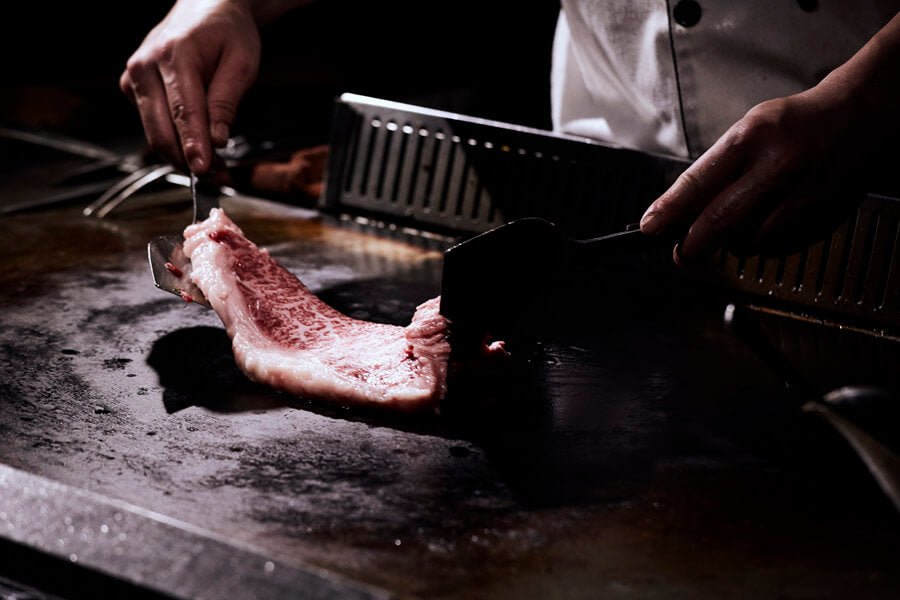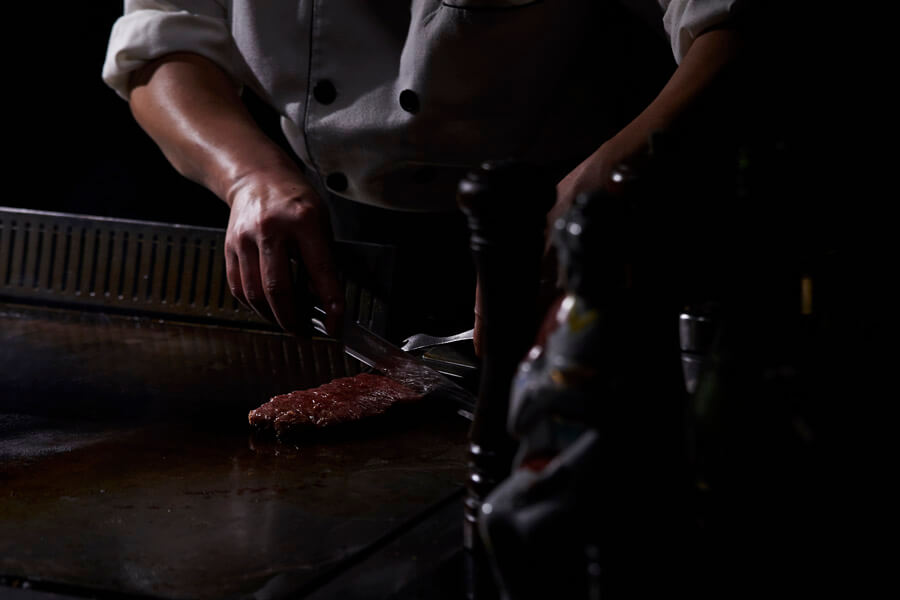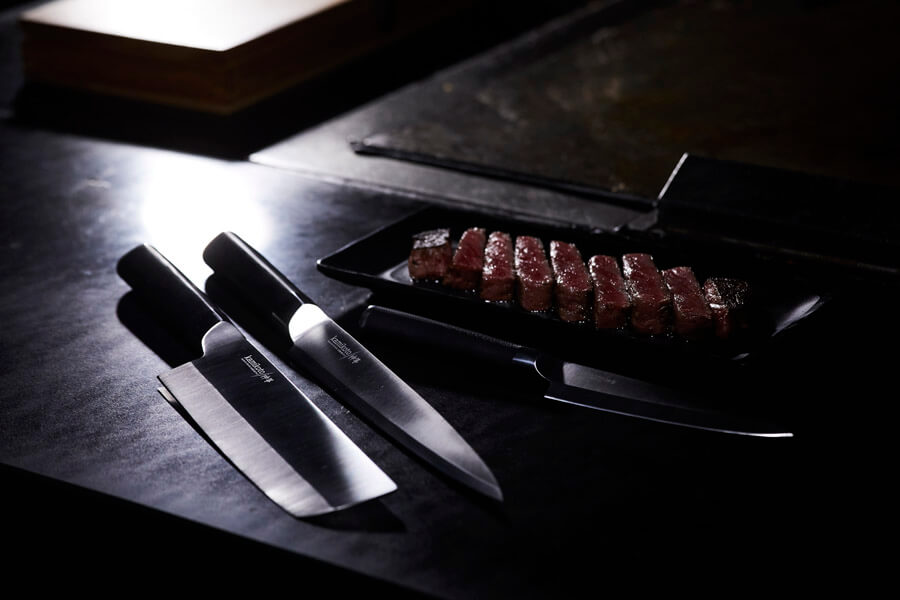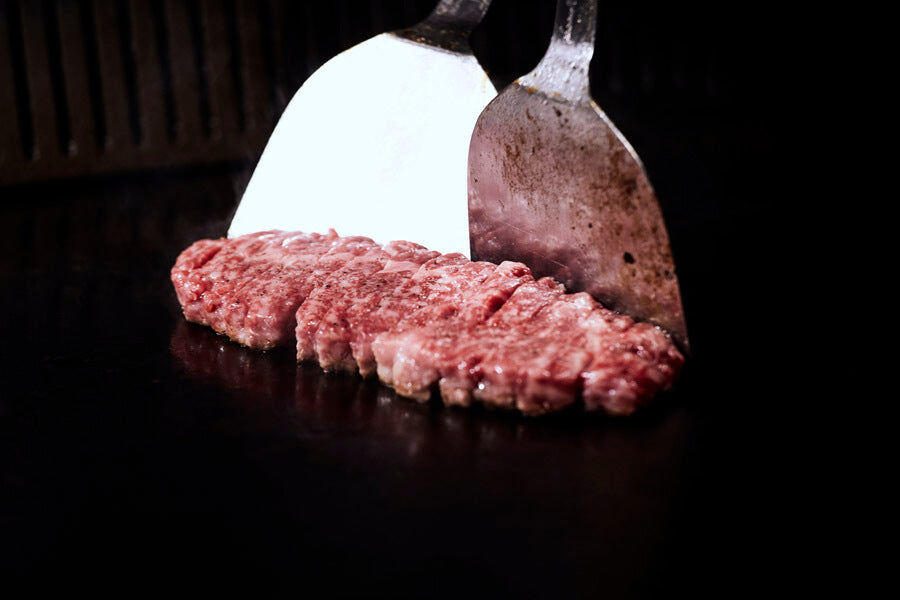
Expertise, mastery, showmanship and precision are four words that aptly describe a teppanyaki chef. In addition to possessing all the skills of a gourmet chef, these professionals incorporate the art of performance into their cooking. They delight diners not just with the taste of their dishes, but with an immense repertoire of amazing tricks they use to create it.
To become a master teppanyaki chef takes much time, practice and commitment. Here are a few essentials to understand about the process.
What is the Difference Between Teppanyaki and Hibachi Cooking?
A clue to the primary difference between teppanyaki and hibachi cooking lies in the translation of each term:
- Hibachi means ‘fire bowl’
- Teppan means ‘iron plate’ and yaki means ‘grill’’
Therefore, in hibachi cooking, one uses a small, bowl-shaped stove filled with charcoal topped by a metal grate-style grill to cook food (thus the name ‘fire bowl’). Conversely, teppanyaki cooking utilizes a large, flat, solid iron grill fueled by propane/gas flames underneath it.
In modern forms of hibachi cooking, hibachi – or shichirin – grills come in portable electric varieties but can also be made from aluminum, cast-iron or ceramics. Teppanyaki grills are much larger than hibachis; so big in fact, that customers can sit around them and watch chefs prepare their dishes, a feature of this style of cooking.
Both forms of hibachi and teppanyaki cooking use grilling as the predominant method of cooking. However, the differences in grill shape and fuel lends themselves to certain types of food.
-
Hibachi grills
Best used to serve small amounts of people as they are perfect to cook bite-sized pieces of food such as yakitori (a variety of ingredients threaded onto bamboo skewers). The grill’s grated design also creates beautiful char marks on the food.
-
Teppanyaki grills
Due to their large, flat surface, teppanyaki grills allow chefs to cook all manner of big cuts of meat and poultry, as well as seafood and diced vegetables. They can also handle cooking ingredients such as noodles, eggs and rice, while hibachi grills cannot due to their grated design.
What Makes Teppanyaki Cooking Unique?

Anyone who has viewed an expert teppanyaki chef at work would agree there is a clear art in what they do. From their intricate knife skills when chopping ingredients, to their work with the flame, to their ability to send ingredients flying airborne and catch them, their level of skill is undeniable. This is what makes teppanyaki cooking so unique and distinctive.
This style of cooking developed in Japan in the 1940s but it was not overly popular with locals. It then crossed the shores to the US where the Benihana restaurant chain embraced it, and its popularity quickly spread.
Today, customers all over the world enjoy sitting down in front of a large teppan grill and watching a master chef at work. Many also enjoy the ‘audience participation’ component where the chef throws food at them and expects them to catch it in a bowl themselves - or in their mouth!
What Type of Food is Found in Teppanyaki Cooking?

The food on offer differs slightly depending on the establishment but can encompass all, or some, of the following:
- High quality meat cuts (Kobe beef is a feature in Japan)
- Poultry
- Seafood
- Assortment of vegetables (whole & diced)
- Noodles
- Fried rice
- Okonomiyaki (Japanese savory pancake)
- Sauce & seasoning accompaniments (soy, vinegar, chili, garlic etc)
What Types of Equipment do Teppanyaki Chefs Need?

Apart from their teppan grill, teppanyaki chefs require numerous of tools of the trade. These include:
- A full set of Japanese knives
- Chef’s uniform
- Utensils (spatulas, scrapers, chopsticks, sauce bottles etc)
- Cooking & plating vessels (bowls, platters etc)
- A knife sharpening whetstone
- Cutting boards
Where Does One Train to Become a Teppanyaki Chef?
As in any culinary career, a mixture of training and experience is required to reach an elite level. As teppanyaki chefs require a high level of dexterity, it is very important they have excellent base training and this can be achieved in a variety of ways through certificates or degrees obtained by attending colleges or culinary arts school.
Once a proper knowledge of food and relevant techniques are gleaned, gaining employment in a teppanyaki restaurant is the next important step. As there are limited courses available globally offering specific teppanyaki training, on-the-job experience is paramount.
Most culinary graduates will begin at the very bottom of the kitchen and slowly work their way up until they find themselves under the tutelage of an expert teppanyaki chef.
How Long Does It Take To Become a Teppanyaki Chef?
How long the journey takes is difficult to surmise. It all depends on one’s skill, learning ability and ambition. As it can take up to 10 years for a chef to learn the art of sushi making, it would be fair to expect a teppanyaki chef trains for just as long considering the amount of culinary tricks they must learn.
No matter where a teppanyaki chef trains, it is important they possess the following personal traits:
- A persevering attitude (developing teppanyaki skills take much time & practice)
- Physical stamina (chefs can spend up to 10 hours on their feet cooking & performing)
- An inviting & personable spirit
- Good communication skills
- High level of manual dexterity
What Do Teppanyaki Chefs Learn?

Apart from developing a supreme level of knife skills, a teppanyaki chef also keenly understands the aesthetics of food plating and presentation. In addition to this, they can be expected to perform a variety of tricks such as:
- Juggling knives & utensils
- Expertly throwing food into diners’ mouths or pockets
- Flipping & catching food in a variety of vessels (ie tossing fried rice high in the air & catching it all in a small bowl)
- An assortment of egg-related tricks
How Much Money Does a Teppanyaki Chef Make?
It is difficult to determine the average salary of a teppanyaki chef as it varies from one establishment to the next.
According to GlassDoor, the national average salary for such a chef in the US is $54,443. However, it is worth noting this figure is based on only a few salary estimates submitted by members of the general population. It is unlikely to be a true representation of the reality in restaurants.
It can be said, however, that teppanyaki chefs are some of the most skillful in the culinary world so it is likely they will be paid accordingly.
Do Teppanyaki Chefs Get Tips?
In Japan, it is not customary to tip chefs and/or wait staff. In fact, doing so is considered rude. However, in the US, tipping is widespread for both wait staff and chefs.
Generally speaking, it is up to the individual diner as to whether they tip a teppanyaki chef. One thing to note is that chefs are paid a base salary and any tips are in addition to this payment. Wait staff rely on their tips for their wage and do not have a base salary.
It is highly evident the skills of a teppanyaki chef are to be admired and lauded. It takes many years to develop such techniques, plus a unique personality who can engage and delight patrons, providing them with a memorable dining experience that will be recalled for many years to come.


